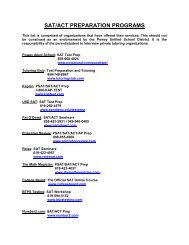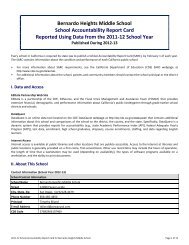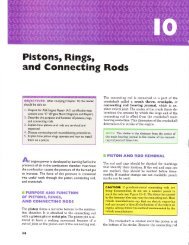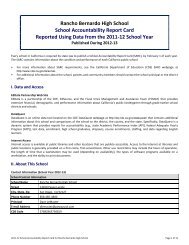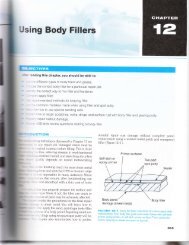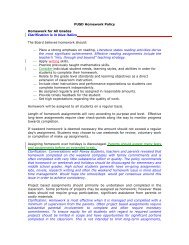Create successful ePaper yourself
Turn your PDF publications into a flip-book with our unique Google optimized e-Paper software.
fomputer Sensor Operation, Diagnosis, and Service 6l I<br />
MAP sensor. The value of the intake (inlet)<br />
manifold pressure (vacuum) is a direct indication<br />
of engine load.<br />
TP senson The position of the throttle plate and<br />
its rate ofchange are used as part ofthe<br />
equation to calculate the proper amount of fuel<br />
to inject.<br />
Temperature sensors. Both engine coolant<br />
temperature (ECT) and intake air temperature<br />
(IAT) are used to calculate the density of the air<br />
and the need of the engine for fuel. A cold engine<br />
(lolv coolant temperature) requires a richer<br />
air-fuel mixture than a warm ensine.<br />
Figure <strong>26</strong>-20 1996 and newer vehicles use an oxygen<br />
sensor behind the catalytic converter. The purpose of the<br />
oxygen sensor is to sense the percentage of oxygen in the<br />
exhaust to check the efficiency of the catalytic converter.<br />
The airflow method actually measures the<br />
amount of air as part of the computer input information<br />
necessary for accurate fuel delivery control.<br />
There are three basic types of airflow sensors used<br />
on port-injected engines: the air vane sensor, the hot<br />
film sensor, and the hot wire sensor.<br />
The speed density method does not require an<br />
air quantity sensor, but rather calculates the amount<br />
of fuel required by the engine. The computer uses information<br />
from sensors such as the MAP and TP to<br />
calculate the needed amount of fuel.<br />
AIR VANE SENSOR<br />
This air vane sensor uses a movable vane that translates<br />
the amount of movement of the vane into the<br />
amount of air being drawn into the engine. An air<br />
OXYGEN<br />
SENSOR<br />
BEFORE THE<br />
CONVERTER<br />
VOLT<br />
OXYGEN<br />
SENSOR<br />
AFTER THE<br />
CONVERTER<br />
VOLT<br />
GOOD (EFFICI END CONVERTER<br />
1.25<br />
OXYGEN<br />
SENSOR<br />
AFTER THE<br />
VOLT<br />
0.00<br />
5.00 5EC/DlV<br />
CONVERTER<br />
BAD (INEFFICIEND CONVERTER<br />
Figure <strong>26</strong>*? I The post-catalytic converter oxygen sensor should display very little<br />
activity if the catalytic converter is efficient.







